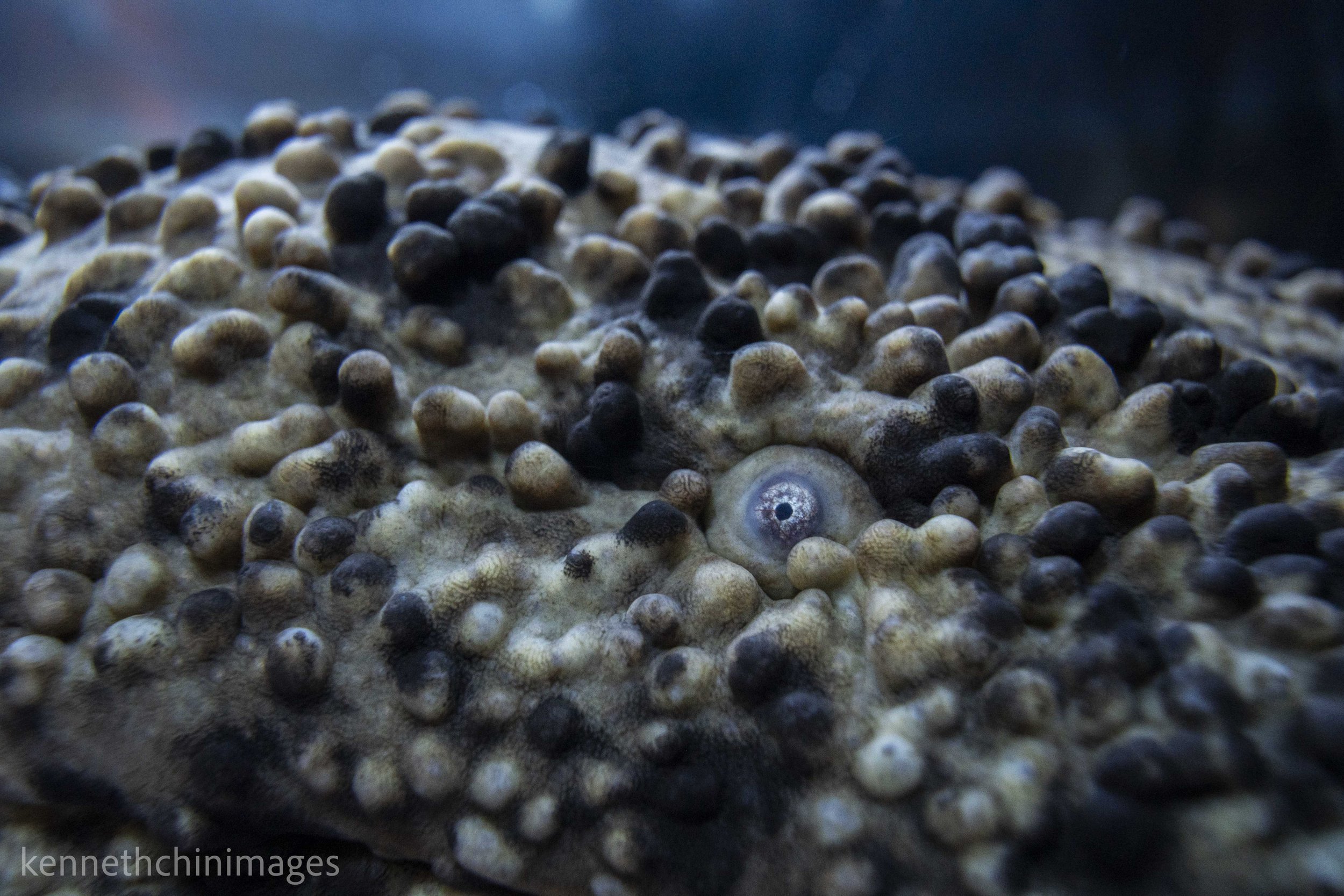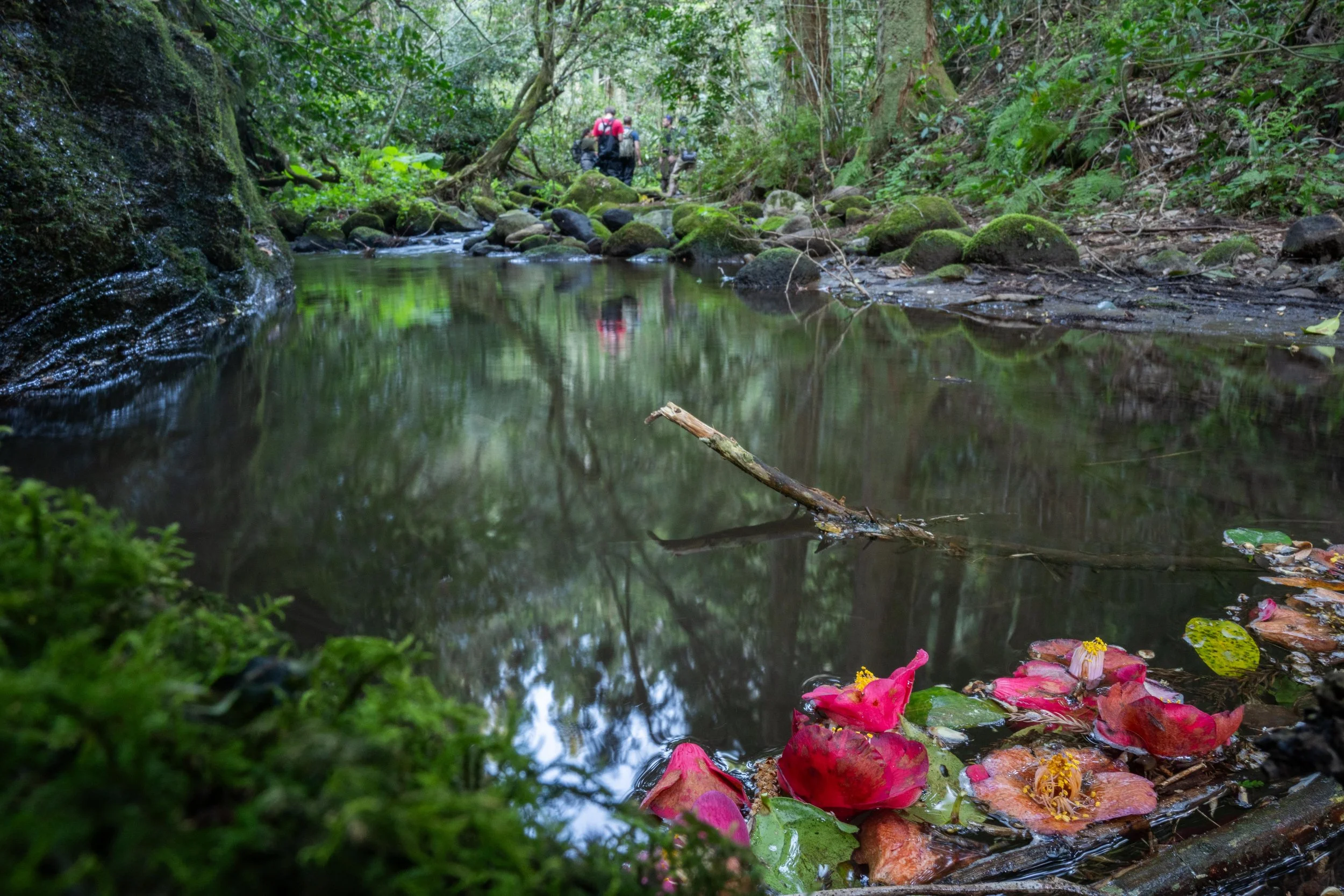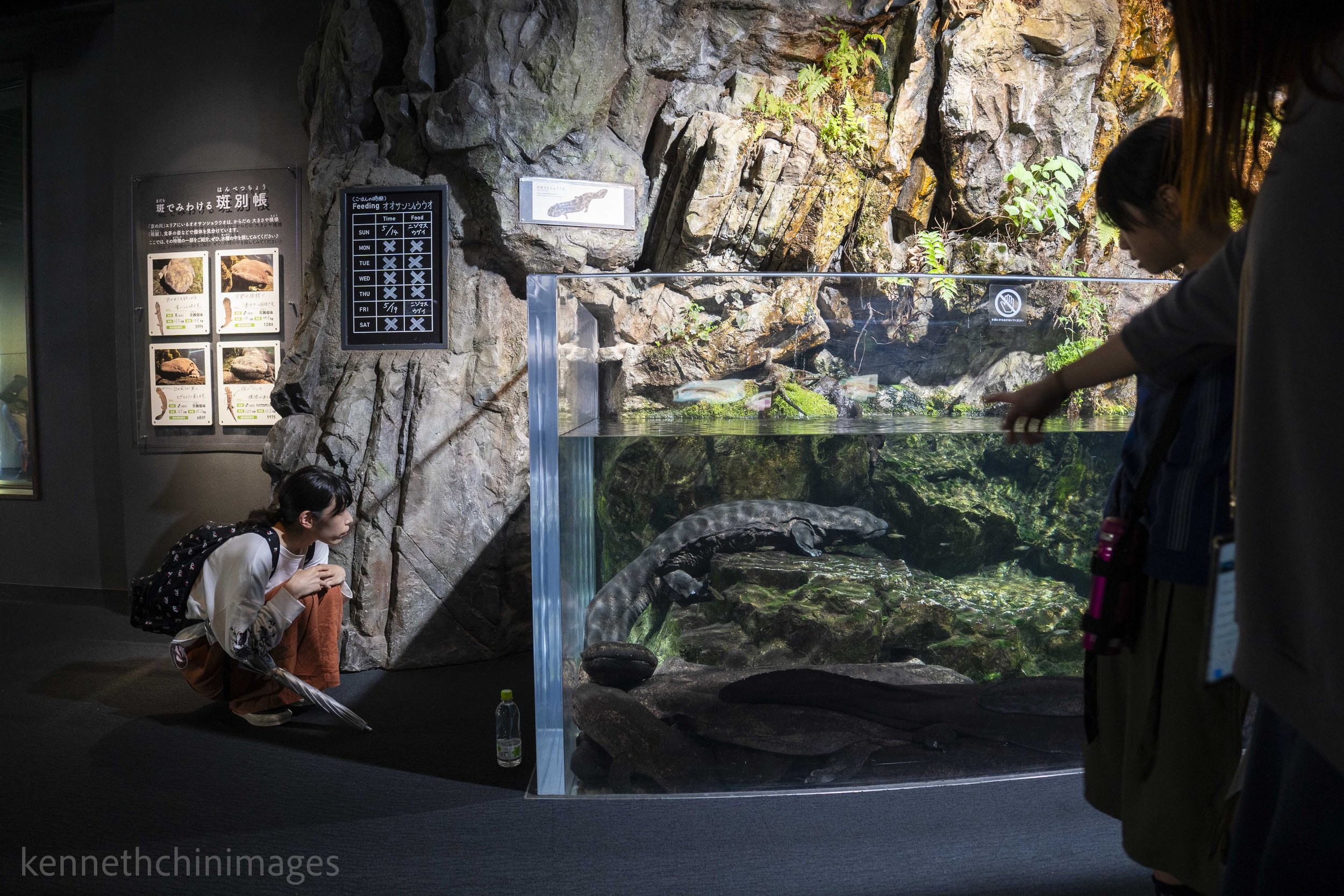
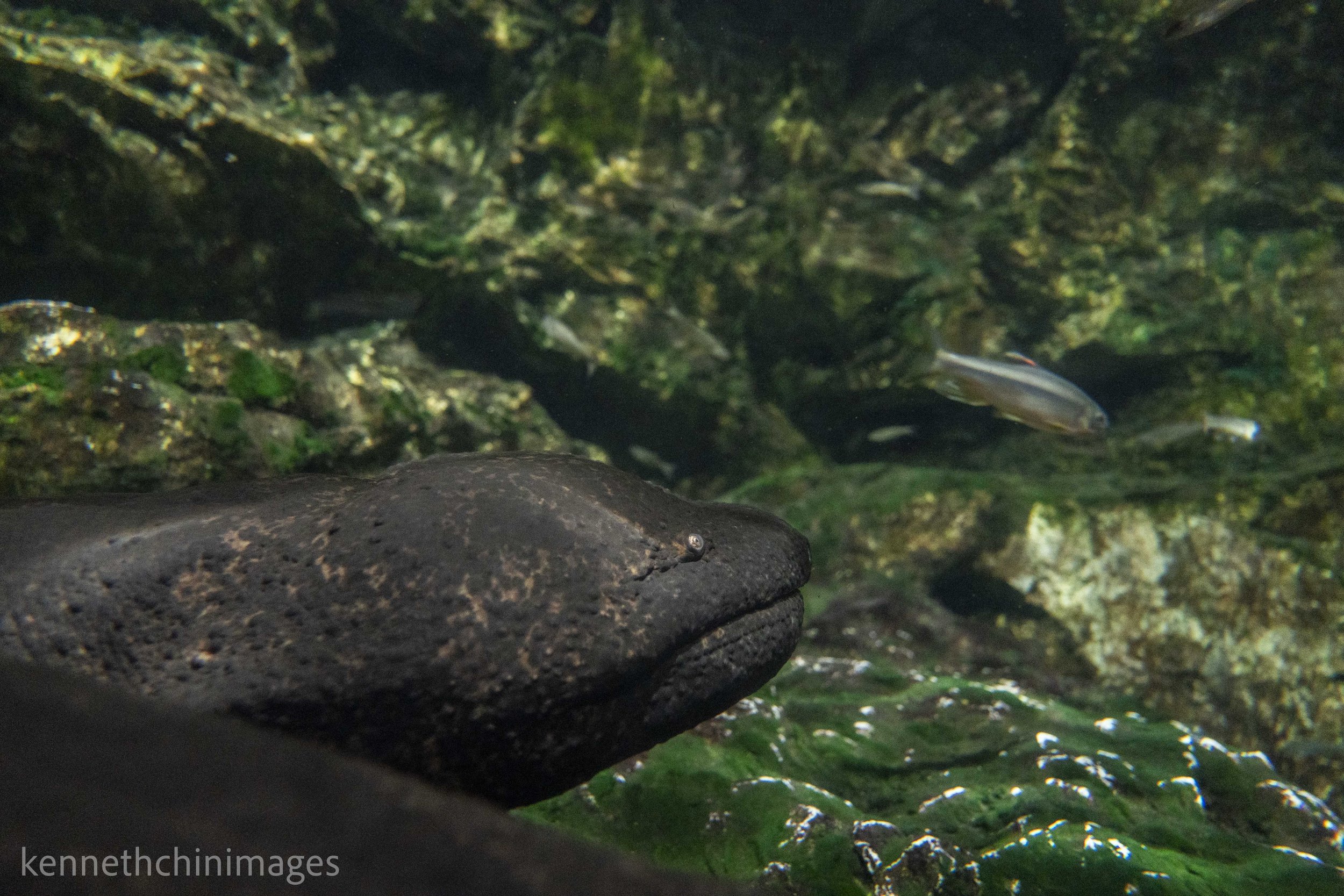
Previously thought to only be 3 species of Giant Salamanders, 2 living in Asia and only one from America, it has been shown that China has a few more species undescribed. Only lately, the 4th species has been described in China, and the last of two that have been assessed by IUCN for the first time is already Critically Endangered. Globally, there are not many researchers working on the conservation of these species.
Japan outlawed the consumption of giant salamanders a few decades ago, and as a result, giant salamanders arriving from China after the ban were released into the wild. Unfortunately, the released individuals hybridized with local ones. and there are now in Japan some pure Japanese giant salamanders, some individuals of Chinese origin, and their hybrids.
Locals are now trying to stop the hybridisation by removing all the non-natives but it requires a lot of work. Kyoto Aquarium has a large display of hybrids and is working on a species protection program to safeguard its existence. Another aquarium, Miyajima Public Aquarium is also doing this. Around Kyoto, there is almost no more native Japanese Giant Salamander left, dominated by the hybrids. For example, a Kyoto City government survey revealed that only four (2%) out of 244 individuals captured in the Kamo River Basin in Kyoto were native A. japonicus. (The Kyoto City Government, 2015).
In Tottori, Richard Pearce is working with conservationists and researchers like Yuki Taguchi to protect the salamanders in northeast Japan, specifically around Mount Daisen. He aims to work with the local government to provide solutions to allow these giant salamanders to travel upstream with more ease, allowing them to breed more, and maintain their populations. Do not hesitate to reach him for his tours, your support will directly help the conservation efforts. Amaël’s lab Laboratory of Animal Behaviour and Conservation is also working with Richard to understand the impact of water quality on the population, determine the presence of invasive individuals, and restore the connectivity of the habitat for adult individuals to be able to reach the breeding habitat.







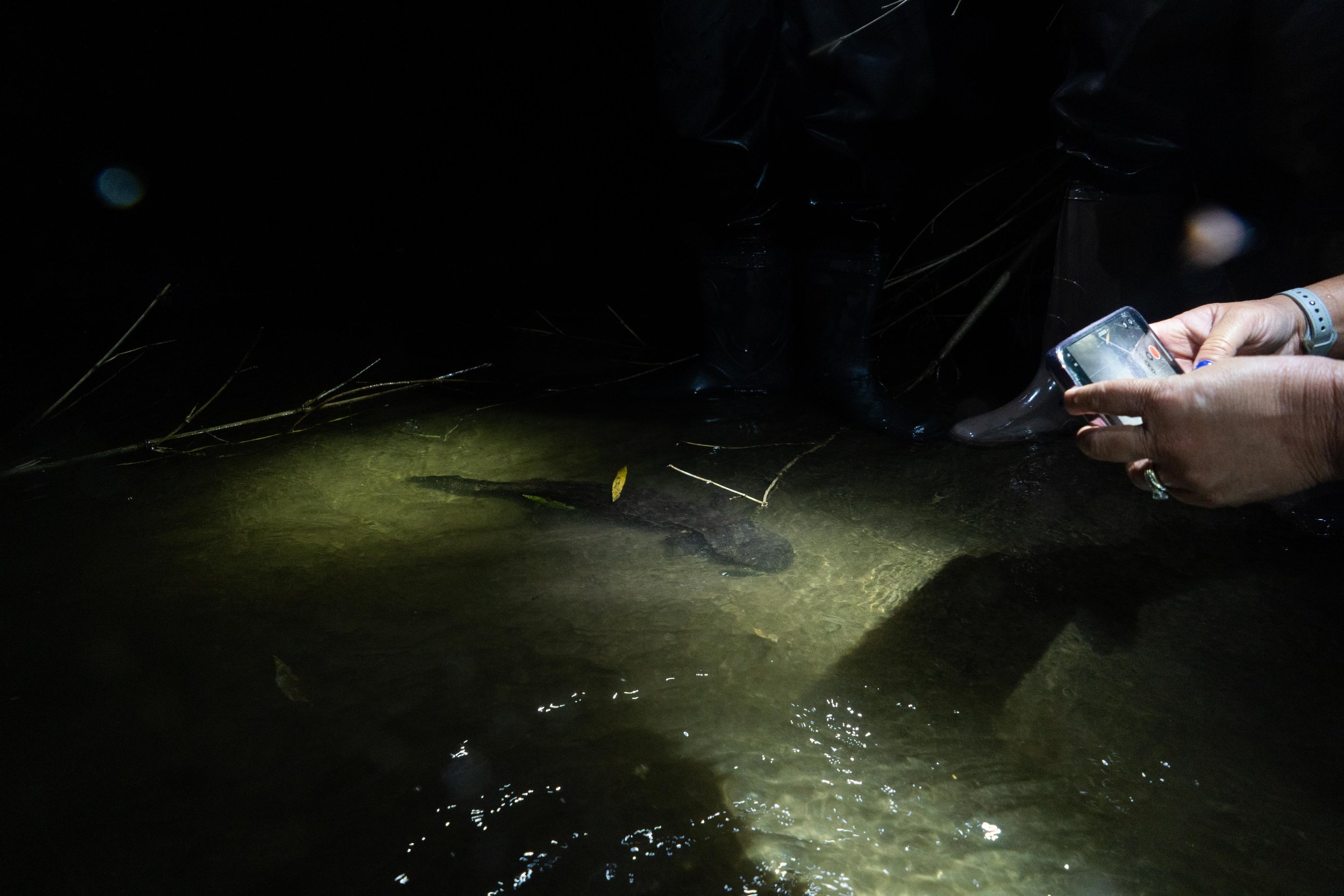

Giant Salamanders have poor eyesight because they have small eyes and rely mostly on their skin which is full of sensory nodes to detect vibrations underwater and help them find their favourite prey - fish. Their porous skin also helps them breathe as they absorb the oxygen directly into their body. It is also why they live in fast-moving rivers.
Head spots of salamanders are a key area for the classification of native and hybrid species. For native species, they have relatively distinctive and large black spots while for hybrids, they have pale and ambiguous wide regions. Each spot pattern is unique to each individual.
Hybrids are found to be slightly bigger, more aggressive/defensive, and lighter in color. The maximum size of the salamanders is found to be dropping over the years because of the reduction in food availability. The development of the water channel management system is the main factor contributing to the shrinking average sizes.



